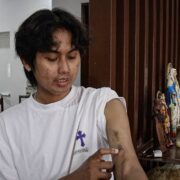How the world raised an anxious generation

Over the last decade, youth mental health has declined at an alarming pace. Globally, one in seven adolescents aged 10 to 19 now experiences a mental health condition, with anxiety and depression among the most common conditions. Suicide has become the third leading cause of death among those aged 15 to 29. These struggles extend into the workplace: a 2023 study found that 68 percent of Gen Z employees say their mental health has impacted their ability to work effectively, compared to 48 percent of millennials.
In his book “The Anxious Generation,” social psychologist Jonathan Haidt links this to three major shifts in modern society, which led to what he calls “The Great Rewiring” of childhood. According to Haidt, the combination of (1) the rise of smartphones and social media, (2) the decline in outdoor and unstructured play, and (3) the tendency toward overprotective parenting has deprived children of certain social interactions that are integral in helping them build emotional resilience.
A central premise of Haidt’s book is that children need exposure to manageable challenges and minor stressors to cultivate their psychological strength. Rather than shielding children from discomfort, healthy development depends on opportunities to make mistakes, navigate conflict, and recover from setbacks. For those of us who grew up in the ’80s and early ’90s, these skills were largely fostered through what Haidt calls a “play-based childhood.” Kids routinely went outside and engaged in peer-led outdoor activities, which were largely unsupervised. Children were exposed to fights, scrapes, and moments of boredom, which enabled them to learn how to resolve arguments, take turns, and adapt. Through these interactions, children learned crucial life skills like risk assessment, cooperation, and self-regulation.
But sometime in the mid-1990s, this kind of childhood started to become less common. Media reports started featuring a lot of rare but sensational cases of child abduction and injuries. This led to what sociologists describe as a “culture of fear.” Many parents believed that the world had become dramatically more dangerous for children and started to restrict children’s mobility. Neighborhoods became more private and insular, while play and peer-to-peer interactions were more strictly supervised.
The heightened emphasis on safety coincided with another shift: parents’ focus on giving children a competitive edge through packed academic and extracurricular schedules. Helicopter parenting—a style where parents constantly monitor their children’s lives and activities to the point of interfering with their decision-making—became more common. Though often well-intentioned, this approach tends to deprive a child of opportunities to make independent decisions, tolerate uncertainty, or recover from failure on their own. Studies have found that children of over-involved parents report higher levels of anxiety and depression in college.
Just as children’s autonomy in the physical world was shrinking, their exposure to an unfiltered digital world was expanding. Between 2010 and 2015, children as young as 9 years old were suddenly going through puberty with a smartphone and these devices gave them constant exposure to unsolicited feedback and social comparison. A teenager, already facing the complex process of identity formation, must also now contend with the influence of social media platforms that measure their social standing through likes and comments. As their screen time surged, it also amplified pressures related to peer validation and self-presentation.
In essence, we overprotected young people in the real world but left them underprotected online. The result is a generation exposed to unprecedented levels of social pressure but with fewer opportunities to develop the coping mechanisms they need to effectively navigate it.
While it is not realistic to return to how things were in the analog era, what we can do is be more deliberate in shaping children’s experiences to bring back more opportunities for free play, risk-taking, and even boredom. Parents can delay the dominance of gadgets in children’s lives and strengthen their real-world interactions and experiences. This includes parents stepping back from micromanaging and giving children space to practice problem-solving on their own. Schools should allot longer periods for recess and physical education and adopt more play-based methodologies in the classroom. Local governments can invest in creating more communal third spaces where meaningful outdoor play and interactions can take place.
The anxious generation did not choose the environment that shaped their development. The adults, as well-intentioned as they may have been, created conditions that put too much focus on safety and success at the expense of resilience and autonomy. The path forward must not only include responding to the mental health crisis but also reimagining what a healthy childhood looks like.


















